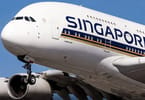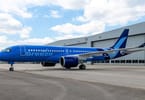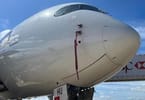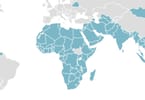LONDON – The International Air Transport Association, or IATA, said 2009 showed the worst demand decline in history, despite December traffic improving 4.5% from a year earlier.
IATA said while traffic—revenue passenger kilometers—improved 4.5% year-to-year in December, the load factor, which measures the proportion of seats filled with paying customers, was 77.6%.
International passenger capacity fell 0.7% in December, while freight capacity grew 0.6% above December 2008 levels, IATA said.
IATA, which represents some 230 airlines and 93% of scheduled international air traffic, said over 2009 passenger demand was down 3.5% compared with 2008 with the 2009 load factor at 75.6%.
Middle Eastern carriers witnessed the fastest growth in passenger traffic, up annually 19.1% in December and 11.2% over 2009, as they increased their share of long-haul connecting traffic over their hubs.
Latin American carriers recorded 7.1% growth in December on the year, however full-year traffic growth was muted at 0.3% due to the impact of Influenza A(H1N1) fears during the second and third quarters.
Asia-Pacific carriers benefited from a 8.0% year-on-year improvement in traffic in December, boosted by the significant economic upturn in the region. By contrast, European carriers saw a 1.2% decline in December and North American carriers declined by 0.4%.
“While both North American and European carriers saw demand improvements in the first half of the year, the second half was basically flat,” IATA said.
It said yields have started to improve with tighter supply-demand conditions in recent months, but added yields were still 5% to 10% down on 2008 levels.
“Revenue improvements will be at a much slower pace than the demand growth that we are starting to see. Profitability will be even slower to recover and airlines will lose an expected $5.6 billion in 2010,” said Giovanni Bisignani, IATA’s Director General and chief executive officer.
Passenger demand for the full year was down 3.5% compared with 2008, with the load factor hitting 75.6% on average.
Freight showed a full year decline of 10.1% and a load factor of 49.1%. December 2009 freight demand improved 24.4% compared with December 2008 with a load factor at 54.1%, but the improvement is skewed by the exceptionally weak performance in December 2008—at the trough of the cycle.
“In terms of demand, 2009 goes into the history books as the worst year the industry has ever seen. We have permanently lost 2.5 years of growth in passenger markets and 3.5 years of growth in the freight business,” Mr. Bisignani said.
WHAT TO TAKE AWAY FROM THIS ARTICLE:
- “While both North American and European carriers saw demand improvements in the first half of the year, the second half was basically flat,”.
- “Revenue improvements will be at a much slower pace than the demand growth that we are starting to see.
- It said yields have started to improve with tighter supply-demand conditions in recent months, but added yields were still 5% to 10% down on 2008 levels.






















